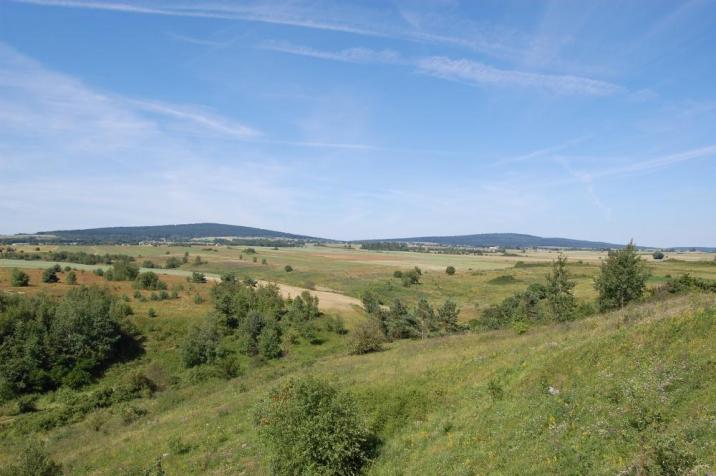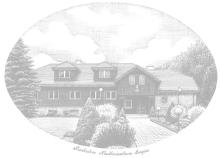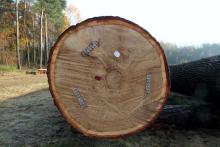 Asset Publisher
Asset Publisher
Polish forests
Poland is in the European lead, while concerning the area of all forests. They cover about 29,2 % of the country territory, and grow within the area of 9,1 million hectares. The overwhelming majority of the forests is state owned, of which almost 7,6 million hectares are managed by the State Forests National Forest Holding..
The number of Polish forest is still growing. The forestation rate of the country has increased from 21 % in 1945 to 29,2 % at the moment. Between 1995 and 2008, the forest area increased by 310 thousand ha. The basis for afforestation works is the "National Programme for Increasing the Forest Cover" (KPZL), assuming an increase of the forestation rate up to 30 % by 2020 and up to 33 % by 2050. Polish forests abound in flora, fauna and fungi. 65 % of the total number of animal species live there.
The forests grow in our country on poor soils, mainly because of the development of the agriculture in previous years. It influences the distribution of the types of the forest sites in Poland. Over 55 % of the forest areas is covered with coniferous forests. In other areas, there are forest sites, mainly the mixed ones. Their small part constitute alder and riparian forests – not more than 3 %.
In the years 1945 – 2011 the area of natural deciduous tree stands within the area of the State Forests National Forest Holding increased from 13 to 28,2 %.
Within the lowlands and uplands the most often occurring tee species is pine. It covers 64,3 % of the forest area of the State Forests National Forest Holding and 57,7 % of private and commune forests. In the mountains the predominant species is European spruce ( in the west) and European spruce with beech (in the east). Domination of pine is the result of carrying on sustainable forest management in the past. Once, the monocultures (crops or cultivations of one species) were the answer to the great demand of industry for wood. Such forests appeared to be quite fragile to climatic factors. They also were often the prey of pests' expansion.
In Polish forests, the share of other tree species, especially deciduous trees have been systematically increasing. The foresters have stepped aside from monocultures – that is why, they try to fit specific species of the forest stand to the natural stand, that would be proper for the given area. Thanks to that, in the years 1945 – 2011, the area of the deciduous tree stands within the lands of the State Forests National Forest Holding increased from 13 to 28,2 %. There occur more and more frequently the following tree species: oaks, ashes, maples, sycamore maples, elms, but also birches, beeches, alders, poplars, hornbeams, aspens, tilias and willows.
Our forests are the most often represented by the forest stands aged 40 to 80 years. The average age of the forest equals 60 years. More and more trees are of big size at the age over 80 years. Since the end of the Second World War, the forests' area has increased up to almost 1,85 million hectares.
Raport o stanie lasów w Polsce 2012
 Asset Publisher
Asset Publisher
Bushcraft i surwiwal w Paśmie Jeleniowskim
Bushcraft i surwiwal w Paśmie Jeleniowskim
21 listopada na terenie zarządzanym przez Lasy Państwowe rozpoczął się pilotaż udostępnienia obszarów leśnych do uprawiania bushcraftu i surwiwalu. Obszary objęte pilotażowym programem wyznaczone zostały na terenie leśnych kompleksów promocyjnych. Na terenie RDLP w Radomiu działania realizuje Nadleśnictwo Łagów (Leśny Kompleks Promocyjny „Puszcza Świętokrzyska”).
Bushcraft i surwiwal to nietypowe formy aktywności terenowej nastawione m.in. na bliski kontakt z naturą, minimalizm i samowystarczalność podczas przebywania w lesie. Na obszarach pilotażowych, dzięki nowym uregulowaniom społeczność ta będzie mogła uprawiać swoje hobby bez obaw o naruszenie ustawy o lasach.
Nadleśnictwo Łagów udostępniło do tego celu obszar Pasma Jeleniowskiego. Będzie to aż 2 000 ha. Wyprawa będzie o tyle ciekawsza, że można ją połączyć z wędrówką w pobliże rezerwatów przyrody: „Szczytniak", „Góra Jeleniowska” oraz „Małe Gołoborze”. W obszarze tym znajdują się również takie atrakcje jak kaplica na Górze Witosławskiej, XIX-wieczna figura Chrystusa w jej sąsiedztwie, czy źródło „Malinowy Stok”.
Łącznie Lasy Państwowe wyznaczyły 43 specjalne obszary leśne o łącznej powierzchni ponad 65 tys. ha. Pilotażowy program potrwa do 23 listopada 2020 roku. Wszystkie szczegóły, w tym mapy i regulamin zostały opublikowane na stronie internetowej Lasów Państwowych. Mapa jest również dostępna w aplikacji Bank Danych o Lasach https://www.bdl.lasy.gov.pl/portal/mapy.
Więcej o obszarach pilotażowych znajdziesz na stronie internetowej
W związku z pilotażem 19 listopada zorganizowano spotkanie w Nadleśnictwie Łagów, w którym wzięły udział instytucje oraz organizacje zainteresowane tego typu aktywnością oraz założeniami pilotażu. Na tym polega idea pilotażu – są to działania wstępne, które mają pomóc rozpoznać podstawowe bariery oraz zebrać wiedzę niezbędną do realizacji przyszłych projektów.
Obszar w Nadleśnictwie Łagów wyznaczony został zarządzeniem nadleśniczego. Ustalono też regulamin do stosowania przez osoby chcące skorzystać z możliwości dostępnych w wyznaczonych obszarach leśnych. Jednym z jego ważniejszych punktów jest biwakowanie w dowolnym miejscu w grupie do czterech osób i nie dłużej niż dwie noce z rzędu bez zgody nadleśnictwa (wystarczy je tylko uprzedzić o tym zamiarze pocztą elektroniczną). Biwakujący będą musieli potem przywrócić miejsce do stanu wyjściowego, przed wszystkim posprzątać po sobie – zgodnie z zasadą leave no trace (z ang. nie zostawiaj po sobie śladów).


 fot. Paweł Fabijański
fot. Paweł Fabijański
 fot. Paweł Fabijański
fot. Paweł Fabijański
 fot. Paweł Fabijański
fot. Paweł Fabijański



